Commencal Supreme DH V5
Wheel Size: 27.5’’ (Size XS); 29’’ front / 27.5’’ rear (Sizes S–XL)
Travel: 220 mm rear / 200 mm front
Geometry highlights:
- Sizes offered: XS, S, M, L, XL
- Headtube angle: 63.2° (Sizes S–XL, low position)
- Reach: 482 mm (size Large, low position)
- Chainstay length: 442.5 mm (+/- 6 mm via flip chip)
Frame material: Aluminum
Price:
- Frame only: $3,200
- Complete bikes: $5,700 to $7,400
Reviewers:
- David Golay (6′, 175 lb / 183 cm, 79.4 kg)
- Zack Henderson (6′, 160 lb / 183 cm, 72.6 kg
Test Locations: Washington, British Columbia
Test Duration: 3 months
Blister’s Measured Weight: 40.7 lb / 18.5 kg (Supreme Öhlins Edition, size Large)
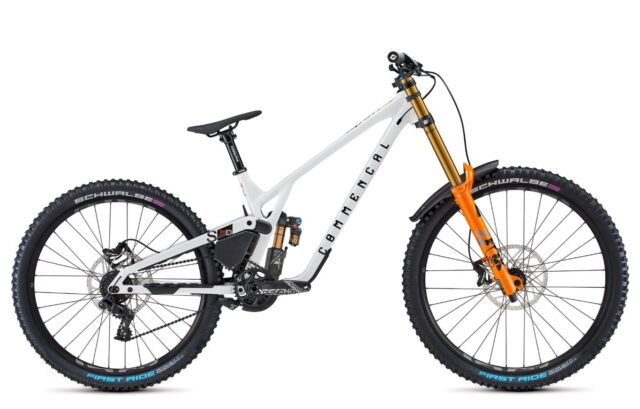
Intro
Commencal has had one of (arguably the) most successful World Cup Downhill race programs in recent years, and Amaury Pierron and Camile Balanche won the Men’s and Women’s overall titles onboard a new iteration of their Supreme DH in 2022. Commencal didn’t try very hard to disguise the new bike, but details on its design were sparse — until now, because Commencal has launched the Supreme DH V5 for pre-order (with deliveries starting in early 2023) and the ways in which its design has changed from the prior-generation version of the Supreme DH are pretty interesting.
The Frame
Commencal hasn’t offered any of their bikes with carbon fiber frame in recent years, and, unsurprisingly, they haven’t started with their latest Downhill bike. The new Supreme DH V5 is still offered in aluminum, only, but a lot else has changed — starting with the new six-bar suspension layout.
The prior-generation Supreme DH was a high single pivot with a linkage to drive the shock. The principal drawback of that layout is that it leaves little room to tinker with the anti-rise characteristics and braking performance of the rear suspension independently of the pivot location (and with it axle path). And indeed, the old Supreme DH did have a very real tendency to settle deep into its travel under heavy braking, both mitigating the suspension’s effectiveness, and changing the dynamic geometry of the bike and upsetting the weight distribution between the wheels.
So Commencal went back to the drawing board, and came up with their new six-bar layout. In profile, it looks something like a dual mini-link bike with a vertically-oriented shock, but with an extra pivot just forward of the dropout at the chainstay, akin to a conventional Horst-link bike. An extra link ties the upper and lower mini-links together to fully constrain the system, and the upper link is actually a three-piece affair, with outer portions that attach to the seatstays, and a splined interface to key it to the inner portion of the link that drives the shock. That’s a complex thing to explain verbally, so let’s just cut to Commencal’s animation of the heart of the system:
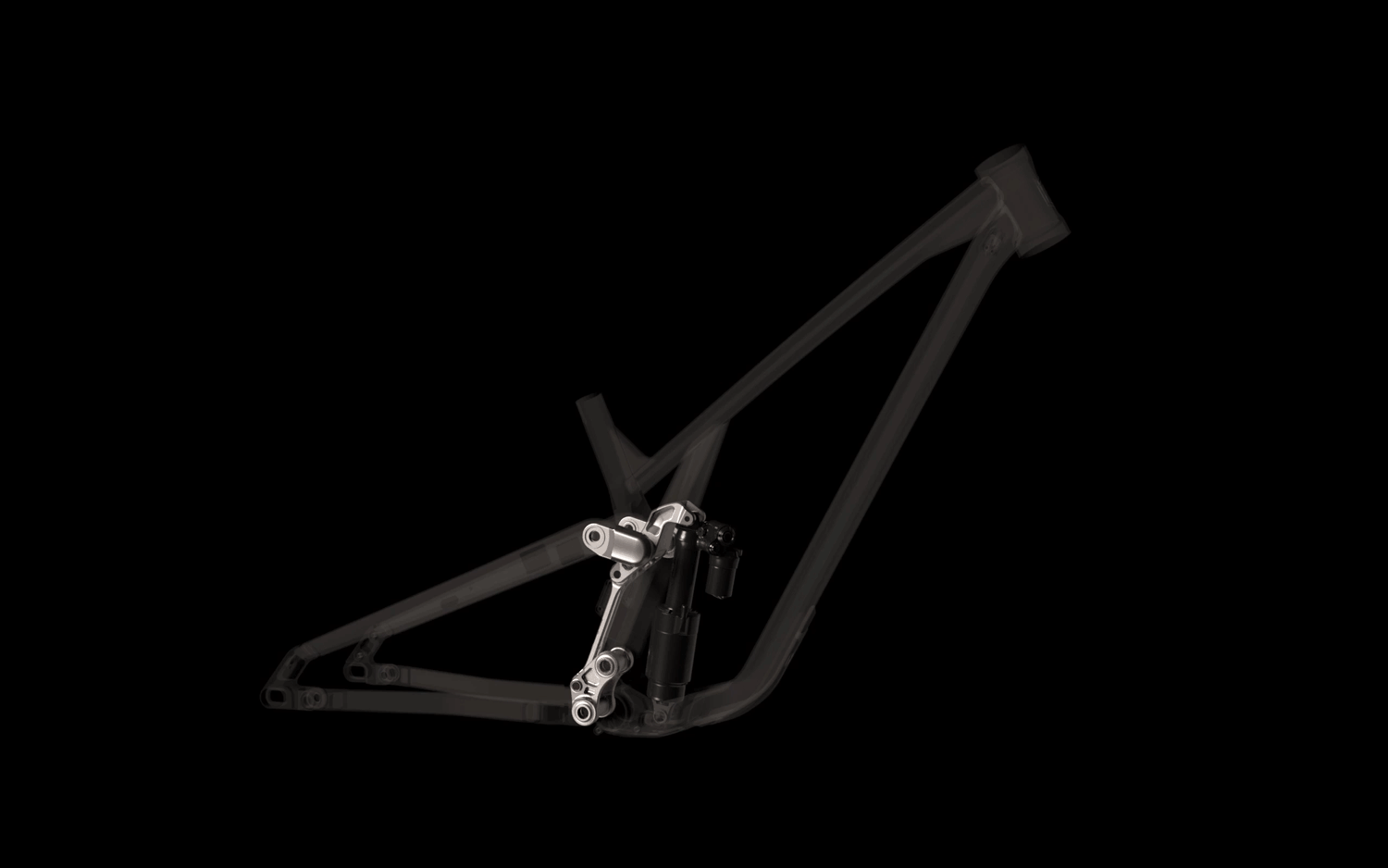
Commencal, unfortunately, doesn’t publish kinematic data for the Supreme DH V5, but they say that the axle path is slightly less rearward than the prior-generation bike and that the kinematics have been refined to produce more consistent and predictable performance. Commencal uses colleted axles in all the pivots to keep things from loosening up, and says that their race team spent the entire season on production-ready frames without breaking any.
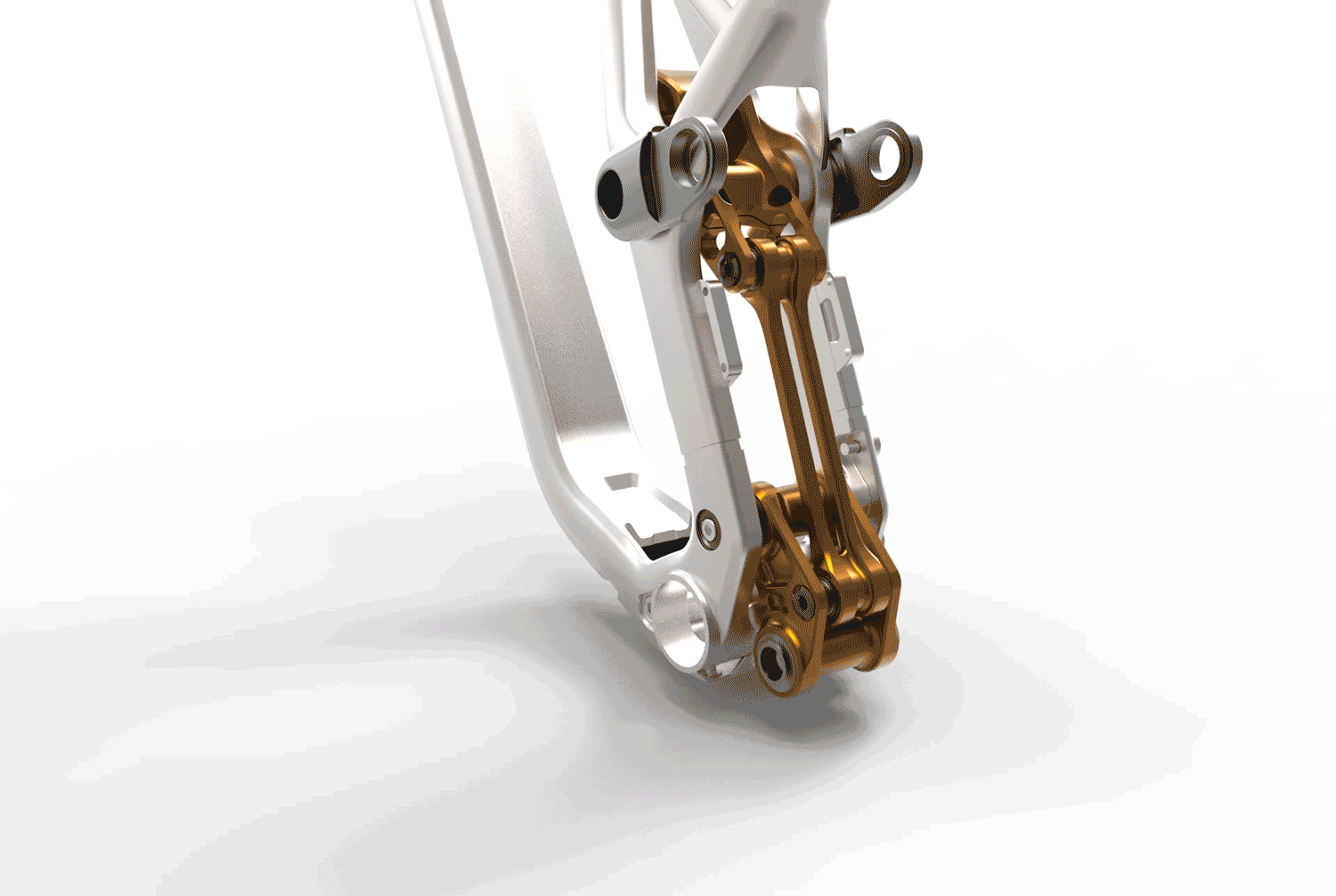
The new Supreme DH V5 also features a whole lot of adjustability — a four-position flip chip at the lower shock mount gives two options for geometry settings, and two different leverage curves, with more and less progressive settings, independent of the geometry options. The chainstay length is also adjustable by +/- 6 mm from the default middle setting (by way of flip chips in the dropouts) and the Supreme DH V5 features a straight 56 mm headtube, for maximum flexibility when it comes to reach and angle adjusting headsets.
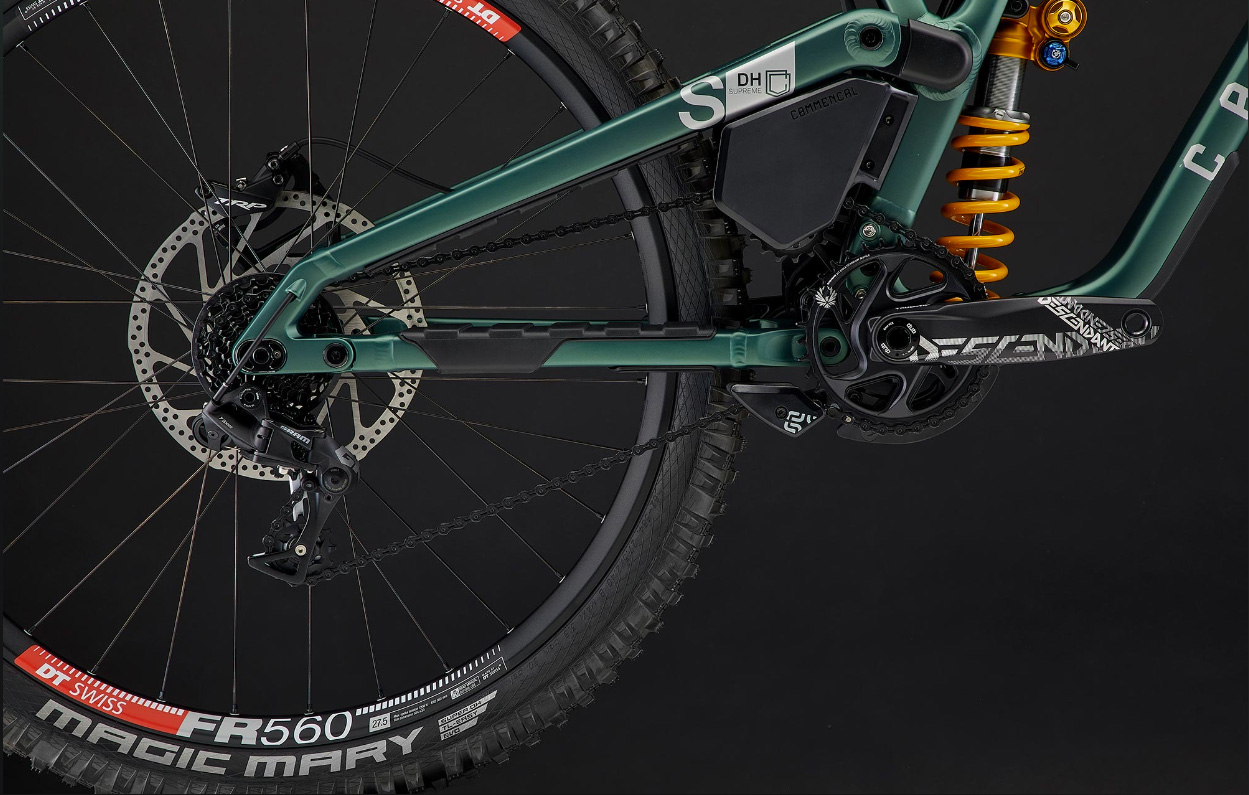
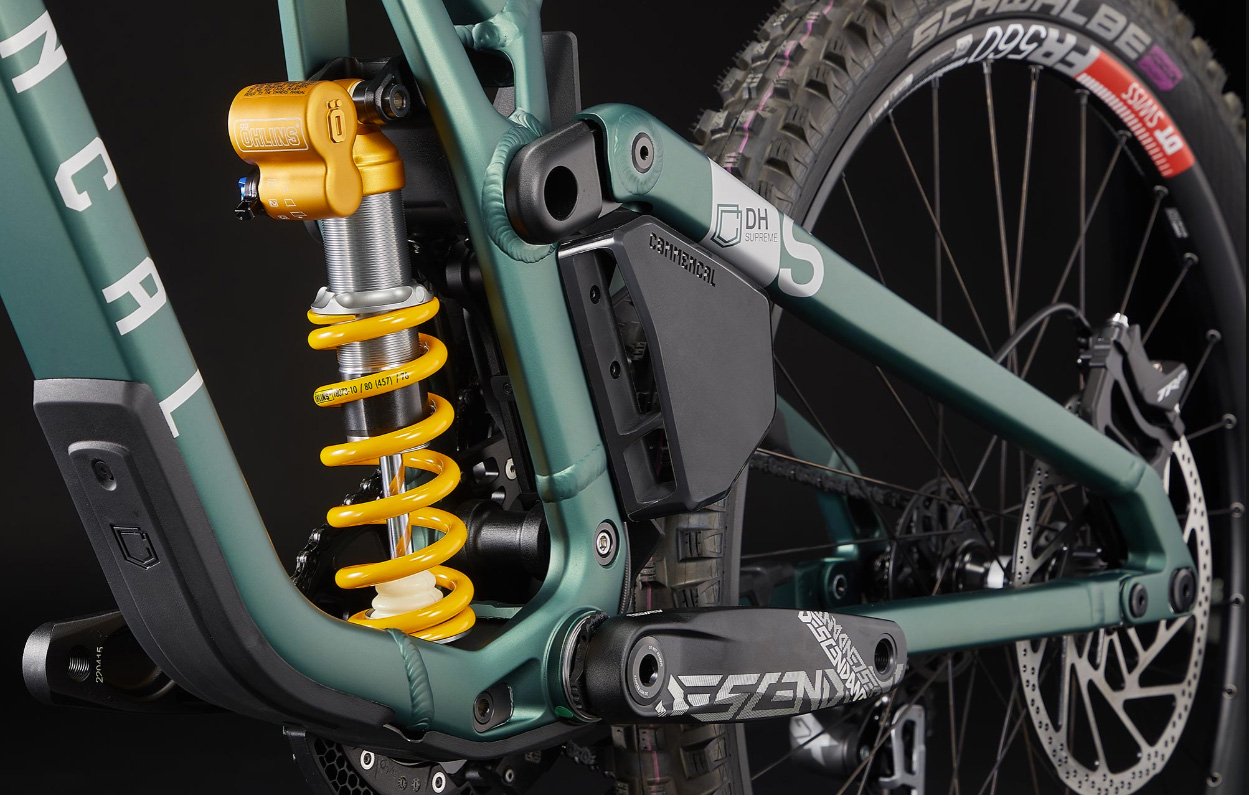
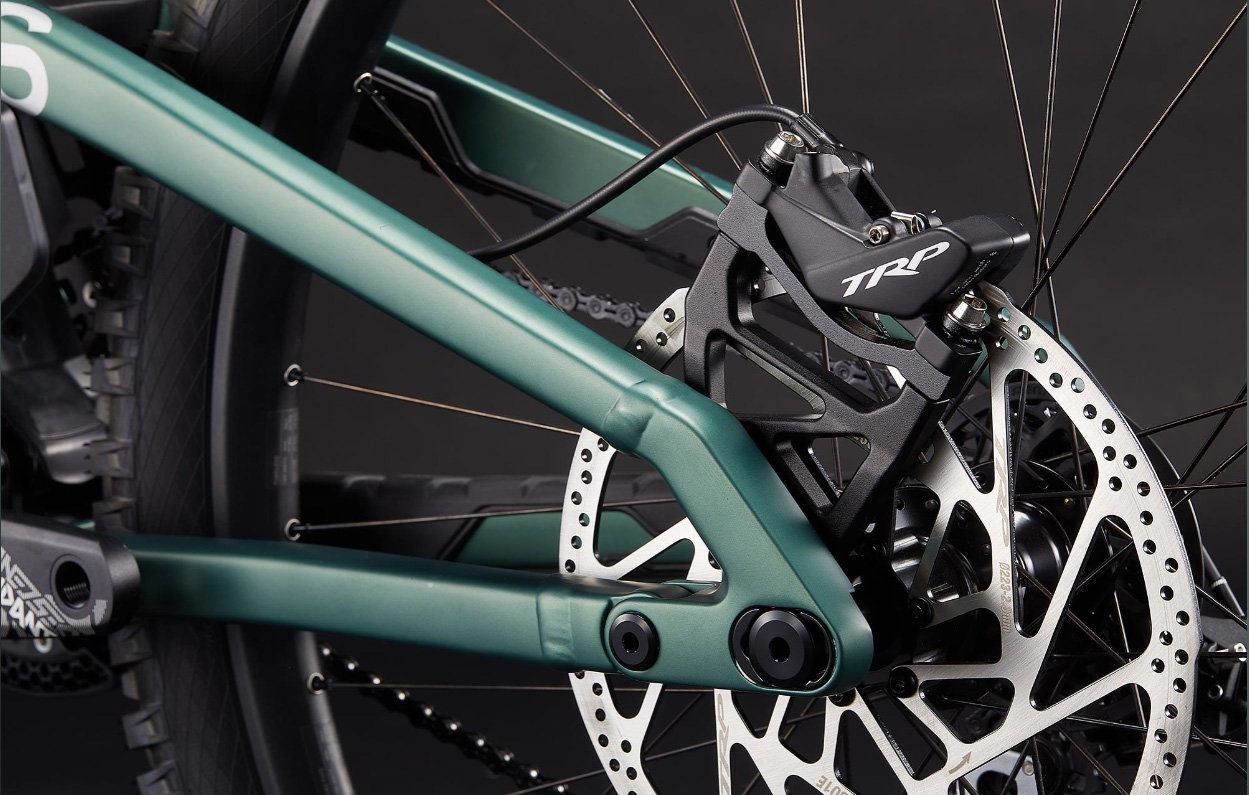
Fit & Geometry
Commencal offers the Supreme DH V5 in five sizes, ranging from XS through XL; the XS frame is a full 27.5’’ frame — a sensible call in our estimation, to keep the bar height manageable for shorter folks — but all of the bigger sizes are dedicated mullets, with a 27.5’’ rear wheel paired with a 29’’ front one. Despite all of the Supreme DH V5’s adjustability, there’s no provision for a 29’’ rear wheel.
Reach ranges from a very-short 400 mm on the XS through 502 mm on the XL, in the low geometry position; the high one increases the reach by 5–6 mm per size, and steepens the headtube angle from 63.2° to 63.7° (on all the sizes apart from the XS, which is half a degree steeper), while raising the bottom bracket by 6 mm.
There’s not a ton that jumps out as being unusual here, apart from maybe the fact that all of the sizes designed for a 29’’ front wheel share the same headtube length, and therefore stack height. At 649 mm (low geometry position) it’s notably high, especially for the smaller sizes, even by DH bike standards; the 27.5’’-wheeled XS frame is still pretty tall, at 629 mm.
That said, I’ve personally been finding that relatively upright body positions tend to work well on mullet bikes, at least for me personally, so maybe Commencal is on to something with the notably tall front end on the Supreme DH. The Supreme DH also doesn’t feature variable chainstay lengths by frame size, which are increasingly common these days, but the inclusion of flip chips to alter the chainstays (442.5 mm in the middle position on all sizes and the low geometry position, with options to go shorter or longer by 6 mm) gives some ability to tweak things.
The Builds
Commencal has long been known for no-nonsense builds on their bikes, and ones that prioritize the parts that most strongly influence downhill performance — brakes and suspension — over things like drivetrains and cockpits. That largely holds true for the Supreme DH V5 as well, with the whole range getting a SRAM GX DH drivetrain and TRP DH-R Evo brakes (full review coming very soon), with the main differences being in the suspension packages on offer.
Commencal also sells the Supreme DH V5 frame as a frame for $3,200 without shock, and you can piece together a custom full or partial build through the configurator on their website if none of the stock options suit your fancy. Interestingly, the XS frame size is only offered on one specific build (helpfully named the “Supreme DH XS”) and some of the other builds aren’t all available in all of the other four sizes. Check Commencal’s website for the particulars.
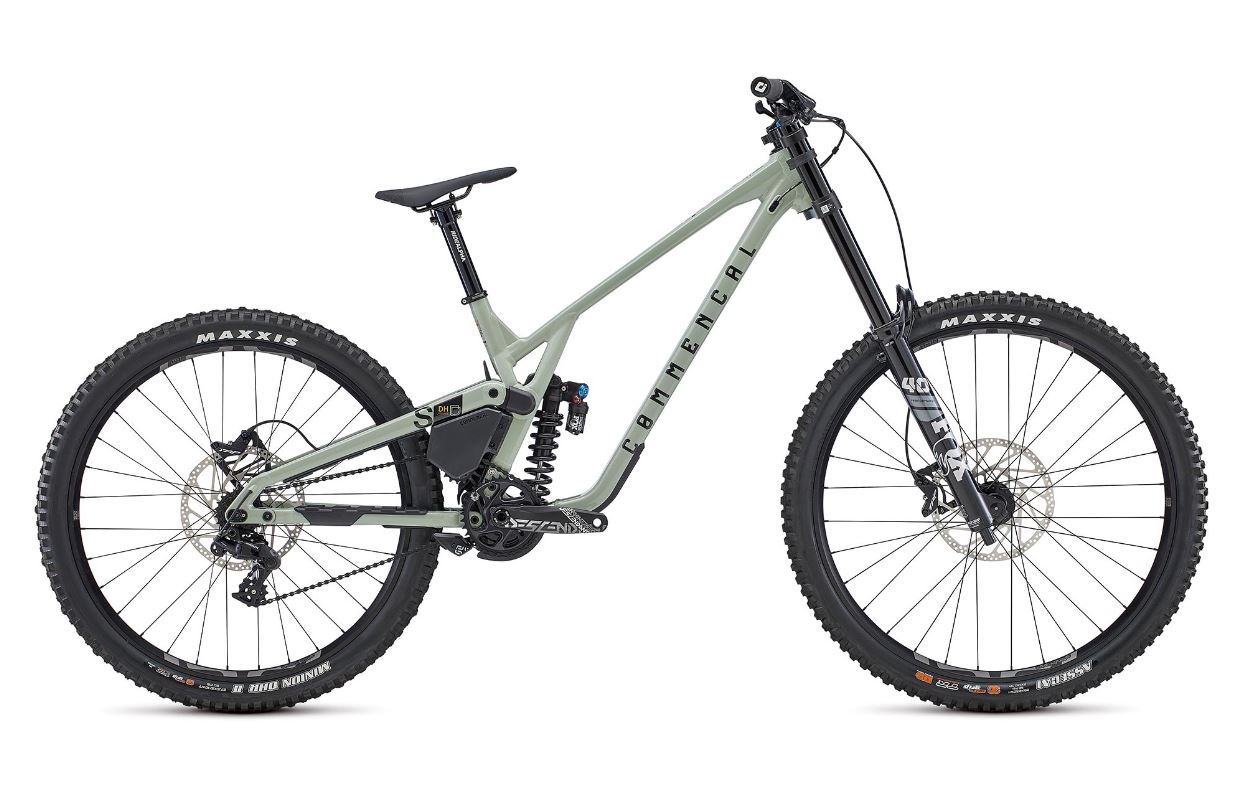
- Drivetrain: SRAM GX DH
- Brakes: TRP DH-R Evo w/ 223 mm rotors
- Fork: RockShox Boxxer Select
- Shock: RockShox Super Deluxe Select
- Wheels: Spank 359 rims w/ Formula hubs
- Drivetrain: SRAM GX DH
- Brakes: TRP DH-R Evo w/ 223 mm front / 203 mm rear rotors
- Fork: RockShox Boxxer Ultimate
- Shock: RockShox Super Deluxe Select
- Wheels: Spank Spike Race 33 rims w/ Formula hubs
- Drivetrain: SRAM GX DH w/ e*thireen LG1+ cassette
- Brakes: TRP DH-R Evo w/ 223 mm rotors
- Fork: Fox 40 Performance Elite
- Shock: Fox DHX2 Performance Elite
- Wheels: e*thirteen LG1+ DH
- Drivetrain: SRAM GX DH w/ e*thireen LG1+ cassette
- Brakes: TRP DH-R Evo w/ 223 mm rotors
- Fork: Ohlins DH38
- Shock: Ohlins TTX22
- Wheels: e*thirteen LG1+ DH
- Drivetrain: SRAM GX DH w/ e*thireen LG1+ cassette
- Brakes: TRP DH-R Evo w/ 223 mm rotors
- Fork: Fox 40 Factory
- Shock: Fox Float X2 or DHX2 Factory
- Wheels: e*thirteen LG1+ DH
FULL REVIEW
The Commencal Supreme V5 has had a ton of success as a World Cup DH race bike over the last two seasons, and when it became available to the general public this year, we were excited to get on one to see how it performed under mere mortals.
Unsurprisingly, the latest Supreme does indeed feel like a bike that’s meant to go fast on rough, steep trails, but it’s an intuitive and not wildly demanding one that could work for more people than you might expect.
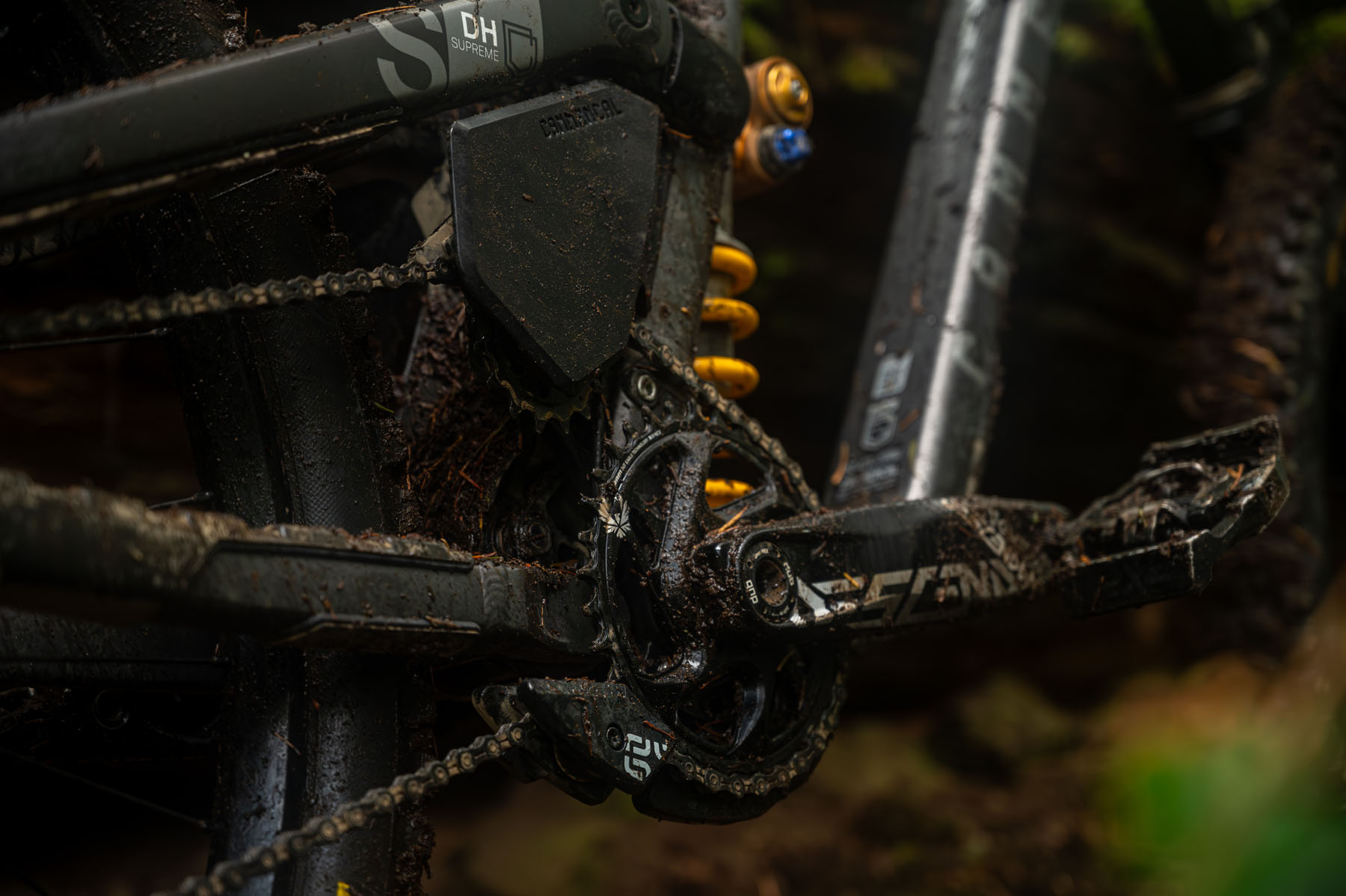
Fit and Sizing
David Golay (6’ / 183 cm, 175 lb / 79.4 kg): I’m solidly in Commencal’s recommended sizing band for the Large Supreme that we reviewed, and while I’m not in the overlapping sections for either the Medium or XL, I’m a little closer to the former than the latter. For the most part, that feels pretty spot on — nothing about the fit of the Large Supreme made me at all tempted to try a different size, and it didn’t take me long to dial in the fit and cockpit setup.
If I’ve got any quibbles with the overall fit of the bike, it’s that I’d love to see the headtube lengths (and thereby the stack heights) increase as you move up the size range. I was able to arrive at a fit I was quite happy with by running a moderately tall stack of headset spacers, plus an extra 10 mm one under the stem. However, I can imagine the stack height being a challenge for folks on the Small and XL frames (for opposite reasons) in particular; the XS Supreme (which it is very cool to see Commencal offering) uses the same 112 mm headtube but paired with a 27.5’’ fork and wheel, so its stack height is much shorter.
I also ended up swapping in a 790mm-wide bar, in place of the stock 780 mm one, in keeping with my normal preferences. Commencal does put an 800 mm bar on the size XL, but it’d be nice to see that break happen a little farther down the size list — it’s easy to trim a bar narrower, after all. But overall, the fit of our Large review bike felt intuitive and I had an easy time getting comfortable on the Supreme. Its fit and sizing seem nicely in line with modern norms for a DH race bike, and there’s not much that stands out as being unusual or tricky to work around.
Zack Henderson (6’ / 183 cm, 160 lb / 72.5 kg): Given that I’m the same height as David, I was unsurprised to also get along well with the Large Supreme. I do prefer a slightly lower cockpit than David does (since it helps bring a bit more weight over the front of the bike), so I did forego the 10 mm spacer under the stem, leaving the moderately tall stack of headset spacers that David had already added. Preferences vary of course, but I too would like to have seen a slightly taller headtube on the Large while maintaining an identical reach measurement. Since adding headset spacers does shorten the reach, I did feel that my longer torso may have liked a few extra millimeters of reach.
The Supreme V5’s low-slung frame offered a lot of space to move around on the bike, though I did find the stock seatpost to be quite short — to the point that it left the seat a bit lower than I typically like, even at the minimum insertion line. I also appreciated David’s addition of the 790 mm bar as 780 mm is a bit below my preference, and agree that an 800 mm bar would be a better spec choice on the Large through XL.
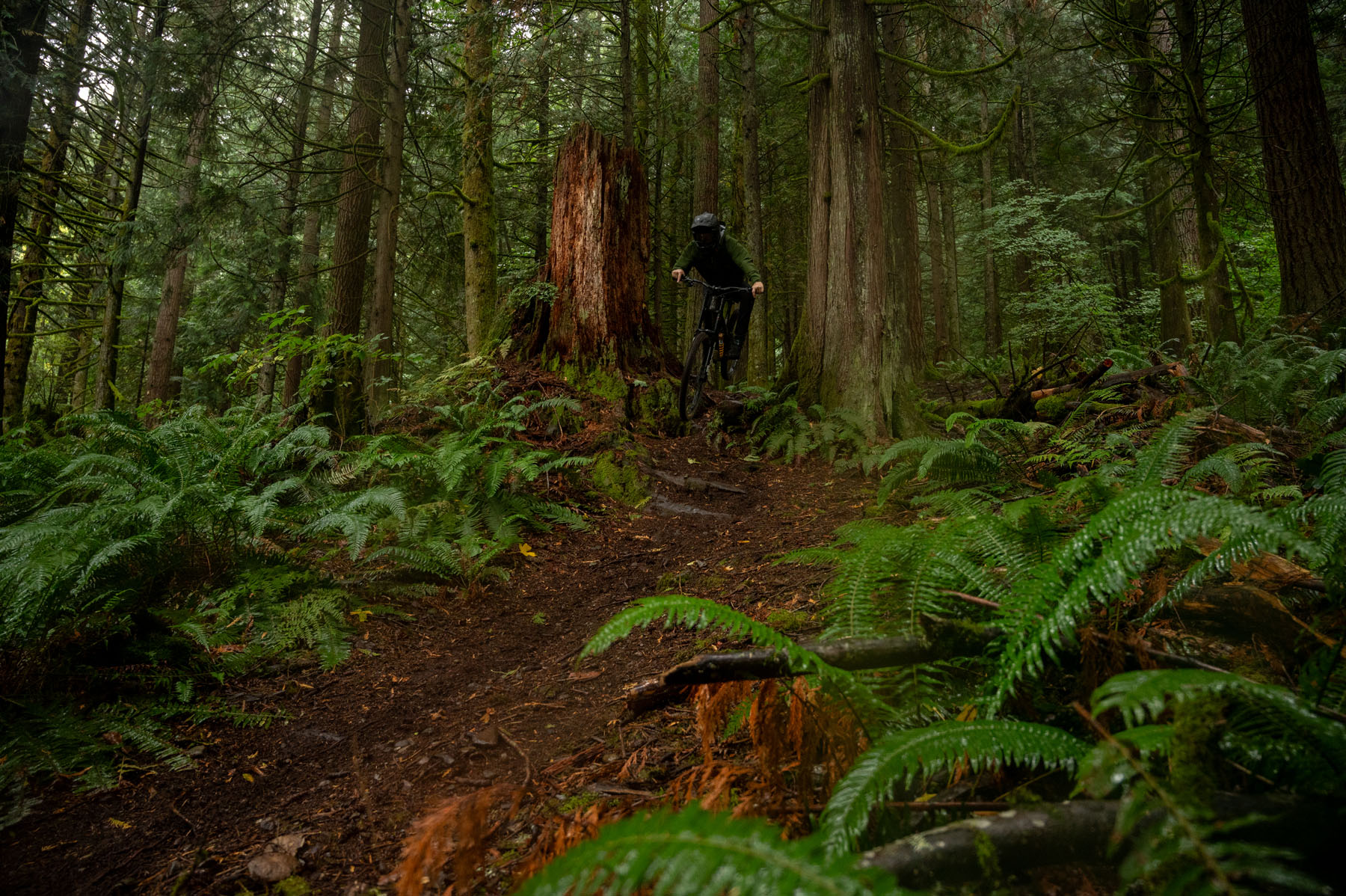
Suspension Performance and Handling
David: Commencal is clear that they meant the Supreme to be a DH race bike first and foremost, and it’s definitely a bike that responds best to being pushed a bit and ridden aggressively at pace. However, I think that Commencal has done quite a good job of making a bike that’s very composed when being ridden flat-out, without making it so demanding that you need to be on your A-game at all times. I’d be very happy to use the Supreme as an everyday park bike in a lot of places, particularly as someone who’s generally more into steep tech than flow trails and jump lines.
Overall, I think the Supreme V5’s suspension performance is excellent. Rear-wheel traction and initial sensitivity are good, but the Supreme still offers good support through the middle part of the travel and is most impressive in how composed it feels when carrying speed through rougher, faster sections of trail. It’s not a bike that feels wildly planted to the point of being tough to pop and get airborne when called upon, but feels impressively well-balanced in how it manages to do a lot of things “fairly” to “very” well, without feeling like it’s making massive compromises in other areas to get there.
Commencal has also done a good job of mitigating some of the downsides that can crop up with high-pivot bikes. Ultra-rearward axle paths can make for sluggish-feeling behavior when jumping, especially on steeper-lipped lines, and high levels of anti-rise (which are common on high single-pivot bikes) often feel like they hamper chassis stability under hard braking, since the rear end settles into its travel when the brakes are applied. Commencal doesn’t publish kinematic data for the Supreme (and its complex six-bar layout makes it tricky to accurately map it from a side-view photo), but its suspension performance feels very neutral and intuitive. The Supreme V5’s suspension remains reasonably active under braking and the chassis feels stable and predictable, staying flat and neutral even when really grabbing on the brakes.
If I’ve got any complaints about the Supreme’s suspension performance, it’s that I had a slightly tricky time getting the front and rear to feel as balanced as I would have liked. I’ve been a big fan of Öhlins’ dual-positive air-sprung forks in their smaller, single-crown variants but with the extra travel in the DH38 configuration, it feels substantially more progressive than, say, the RXF38 at 170 mm travel, and when set up to provide the midstroke I wanted, the DH38 ended up feeling a touch more progressive deeper in its travel than would have been ideal. Combined with the Supreme’s 220 mm of rear travel (i.e., substantially more than the front travel), I initially struggled with feeling like the Supreme was using the middle part of its rear travel more readily than the front, and the chassis felt slightly unbalanced as a result, particularly in high-speed chop. It wasn’t a major issue by any stretch, but I initially felt like the rear end of the bike was settling a little too low (relative to the front) and slightly hanging up the bike as a result.
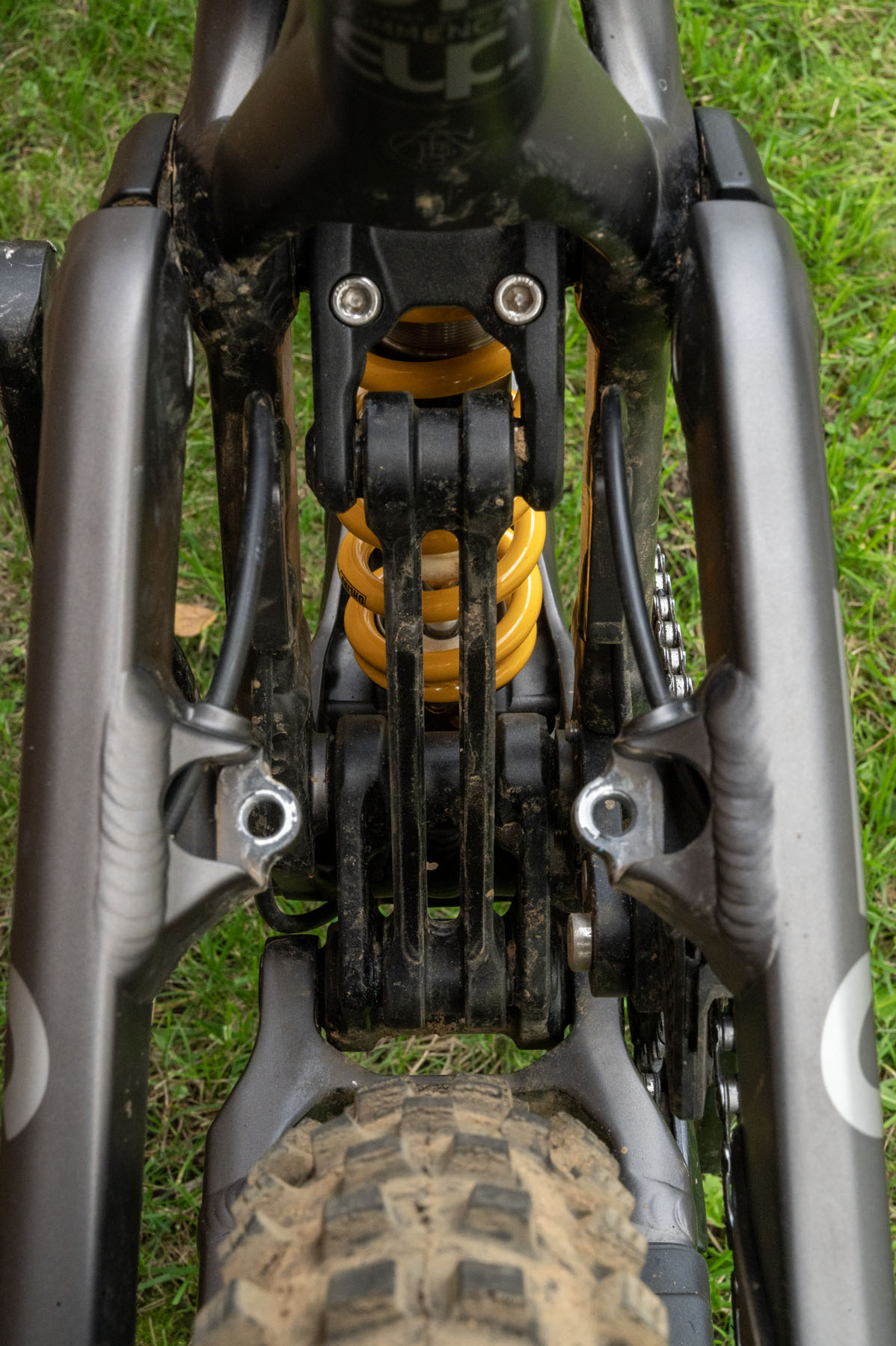
To be clear, this felt like more of an issue with the fork being more progressive than I wanted, rather than anything to do with the rear end directly. So I ended up running the fork a touch softer than I might have preferred otherwise and increased the bar height to compensate for the lower dynamic front ride height, which ultimately worked quite well. The setup was a little less intuitive than I might have hoped for, but I was happy with the end result. The stock 457 lb spring on the shock worked nicely for me (175 lb / 79.4 kg), producing just over 30% sag. I’d probably want to go up to a 480 lb spring if I weighed much more — I’m definitely closer to going up than down — but the stock one worked well.
As per usual for Öhlins, the compression damping tune on the DH38 (and TTX22, to a lesser extent) feels on the firmer side of average. I was happy running both the fork and shock around the middle of their three high-speed compression settings, and the low-speed compression a touch on the lighter side of the range, but folks who specifically prefer lighter compression-damping setups should probably consider a build with a different suspension package. Commencal has some good options there.
[I also spent some time with the new RockShox BoXXer on the Supreme. With the BoXXer, I found it a little easier to get the more balanced feel that I was looking for in terms of spring settings than I did with the DH38, but I could get both to a place I was happy with. Full review of the BoXXer coming soon.]
I’d have loved to try the longer chainstay setting on the Supreme, but unfortunately, Commencal didn’t have the flip chip parts available to make the swap. It’d be nice for those to be included with the bike when you buy it (especially if their aftermarket availability is going to be limited). On the chainstay front, I wasn’t seeking more stability, exactly — the Supreme is already quite good in that regard — but was more curious to see if lengthening the chainstays would make it a little easier to ride the Supreme from a more centered body position and produce a little more front-end grip without needing to be weighting the front as aggressively. Am I confident that I’d prefer the longer setting? Not at all. The stock configuration worked well for me, but it would have been nice to have had the opportunity to experiment (and some folks who purchase the Supreme might think the same).
I generally preferred the low bottom bracket / high progression setting on the Supreme’s lower-shock-mount flip chip, though the changes it makes are definitely more subtle tweaks than a massive change in character. Mostly, I preferred the fractionally longer chainstays and lower bottom bracket that the low setting produces for cornering reasons; it felt slightly easier to load up through the pedals in a well-supported corner, and required slightly less care to keep the front wheel properly weighted and gripping. Small-bump sensitivity and traction are a touch better in the high progression setting, with a slight tradeoff in liveliness and pop as compared to the lower progression one; again, those differences are fairly subtle. The flip-chip configurations seem well chosen to offer some ability to fine-tune the feel of the bike, without making any wild off-the-deep-end changes that put it out of sorts.
[It is worth noting that it’s possible to run the Supreme in all four possible settings with the stock flip chips, but the low bottom bracket / low progression and high bottom bracket / high progression combinations require reversing the orientation of the lower shock bolt so that it goes into the frame from the drive side, which in turn requires removing the crank for access. Commencal makes a mirrored version of the flip chip to handle that issue, but it’s not included with the bike.]
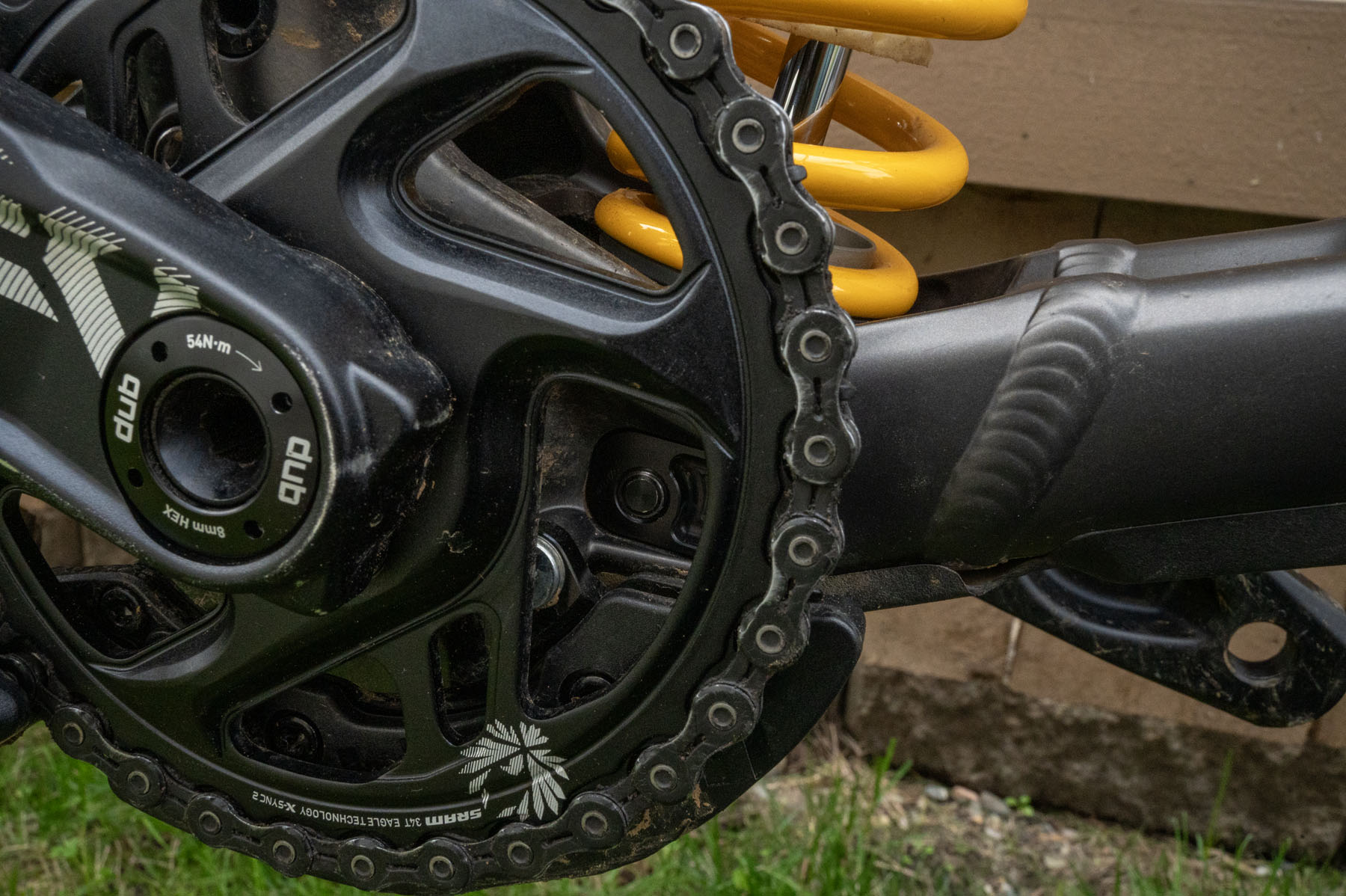
Overall, the Supreme clearly feels like a bike that’s interested in going fast and emphasizes composure and stability at speed over being ridden playfully or serving as a freeride bike, but it does a respectable job of not feeling overly demanding or cumbersome if you back off a bit. It’s far from being the most engaging bike at lower speeds, but it’s not a complete handful, either. It’d be an excellent DH race bike, and its success on the World Cup circuit is a testament to both that and to Commencal’s wildly stacked roster. Still, the Supreme V5 is also a viable everyday DH / park bike for folks who tend to prefer tech trails (and riding them at pace) over flow trails and jump lines. It’s not that the Supreme jumps poorly, but it’s just more stable, planted, and more work to throw around in the air than most Freeride-oriented options, and there are better options out there if you’re after, say, a dedicated A-Line bike.
Zack: Having watched this exact frame under some particularly fast French men and women on the World Cup circuit, I was expecting a very game-on bike that would be a bit less satisfied taking cruiser laps. My time on the Supreme V5 was spent in Whistler, and while I expected impressive composure on the roughest tracks, I was pleasantly surprised by how much I enjoyed it on just about any of the more natural bike-park tracks I got it on.
I historically have gotten along very well with Öhlins suspension and am quite familiar with their single-crown fork offerings; the DH38 m.1 was a new experience for me and offered a few differences vs. how I’ve set up my personal favorite fork from Öhlins, the RXF38. The DH38’s damper feel was expectedly on the firmer side of things from a compression standpoint, but it seemed to have a slightly lighter rebound tune that allowed me to be a little closer to the middle of the range (rather than running it fully open as I typically do with the RXF36 and RXF38). The air spring in the DH38 m.1 was notably smooth and supple off the top, but like David, I found that the progression seemed to kick in pretty early in the stroke, making it hard to use full travel. I typically run my forks at higher pressures than recommended for my weight, in order to keep them riding taller in the travel, but I ended up landing fairly close to Öhlins’ recommendation for my weight on the DH38 m.1, perhaps running just a couple more PSI in the main chamber. With this fiddling, the fork felt remarkably composed, if a bit firm for the repeated braking bumps of late-season bike park riding, but potential buyers should be prepared to find their happy place after some quality time spent tuning.
While the fork took some time to dial in for my liking, the TTX22 shock had just the right spring rate for my weight and paired beautifully with the Supreme V5’s suspension design. I had limited testing time on the bike relative to David, so I opted to run the bike exclusively in the low bottom bracket and high progression setting to allow myself to familiarize myself with the bike as much as possible in a short time. In that configuration, the rear suspension seemed to strike a great balance between being both forgiving and efficient in its use of travel.
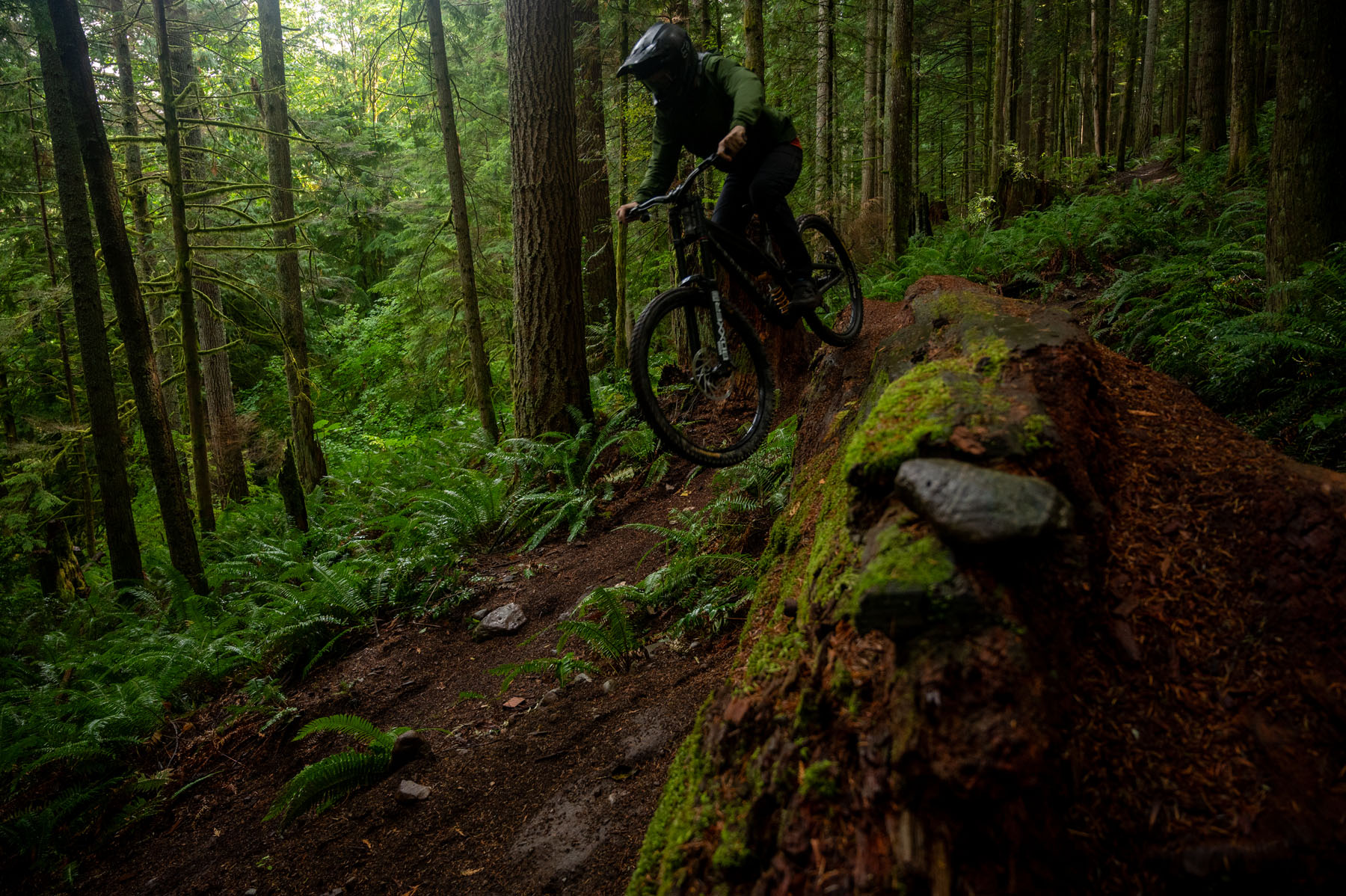
The Supreme V5’s new 6-bar layout is admittedly complex, and were it my bike, I’d be intimidated by a future bearing overhaul, but there’s no denying that the ride feel is superbly neutral and composed. Commencal’s prior Supreme V4 had the reputation of being a particularly extreme example of a high-pivot design, with a substantially rearward axle path and some unique braking qualities. In contrast, the Supreme V5 feels surprisingly close to a non-high-pivot bike in its braking and cornering characteristics while still offering a reassuringly solid and supportive feeling in rough terrain. Downhill bikes have a way of making you feel like a superhero in the right terrain, and I found the Supreme V5 particularly confidence-inspiring on some of the more varied natural trails in the bike park, where it offered lots of composure when going fast through the sort of terrain that typically requires an active, engaged riding style to keep momentum.
I’ve spent a good amount of time on both full 27.5’’ and 29’’ downhill bikes, but this was my first experience on a mullet configuration, and it did leave me feeling a bit conflicted. On one hand, I certainly found the smaller back wheel to offer faster changes in direction at higher speeds, and I didn’t have a single episode of the tire catching my pants despite riding some very steep lines. On the other, I could not shake the feeling that the 27.5’’ wheel offered just a bit less grip in situations where traction was at a premium, and I did feel that I had to ride much more forward on the bike than I might typically like, in order to keep the front end from wanting to stand up and get away from me when exiting corners.
I was able to (partially) test this hypothesis with some back-to-back runs comparing the Supreme V5 to a full 29’’ Canyon Sender CFR — a bike with largely similar geometry — and I did feel that the Sender allowed me to keep a more centered body position with less weight through my hands, especially while cornering. Like David, if we had the proper flip chips on hand, I would have liked to try the longer chainstay setting since I suspect that may have corrected some of what I was feeling with the mullet rear wheel in terms of handling and body positioning.
I should again caveat that I didn’t get a huge amount of time on the bike, so there may have been other settings-related experiments that could have unlocked more potential, but on the whole, I was very impressed by the Supreme V5. Despite the bike’s clear preference for higher-speed riding in technical terrain, it was intuitive to ride and seemed to reward an active riding style. Where some downhill bikes can feel vague in the way they isolate you from the trail, it was easy to keep a handle on what the Supreme was doing at all times, making it a very predictable ride. The forward body position did prove more fatiguing over long days in the park, but that more engaged riding position was rewarded with speed and composure on some fairly thrashed Whistler Bike Park trails.
Build and Spec
David: Overall, the spec on our Supreme V5 Öhlins Edition is thoughtfully chosen and a reasonably good value for the price. The Öhlins DH38 / TTX22 suspension package is great and I quite like the TRP DH-R Evo brakes, apart from their reach being longer than I’d prefer (check out our full review for more on that). I appreciate that Commencal hasn’t messed around with rotor sizing, having spec’d 223 mm ones at both ends. The SRAM GX drivetrain works nicely, and I don’t think there’s much reason to go fancier than that on a DH bike (at least for most folks).
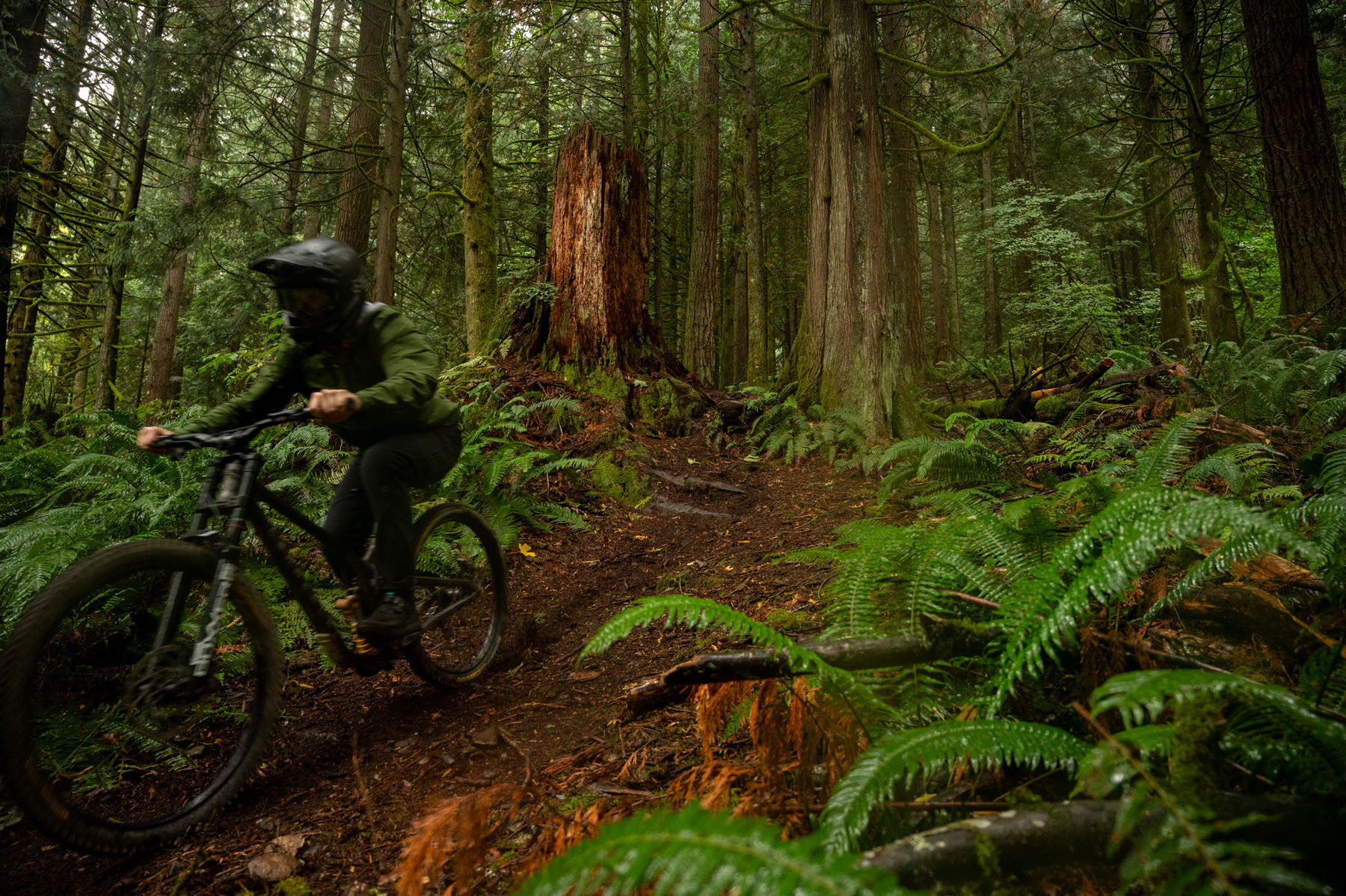
I did have some trouble with this Supreme’s e*thirteen Grappler wheels, denting the rear badly enough to blow the tire off the rim on my first day on the bike. I was able to bend it back enough to be serviceable, but the damage seemed somewhat out of proportion to how severe the impact felt — I hit a rock at some speed, but I’ve definitely gotten away with worse on some other wheels. It’s also worth noting that the rear hub uses e*thirteen’s proprietary direct-mount cassette. That works just fine and should last a very long time on a DH bike that’s not seeing a ton of pedaling, but does limit replacement options down the line, should you wish to go another direction for whatever reason.
Dealing with the damaged rim did give me a good opportunity to swap on some different tires (a Continental Kryptotal DH Supersoft Front / Michelin DH34 rear), since I’ve never gotten along with the Schwalbe Magic Marys that came stock, especially in the drier, firmer conditions that were prevailing in the earlier part of my time on the Supreme. There’s no tire spec that’s going to make everyone happy, and I know the Magic Mary has its (often vociferous) defenders, but I’ve always found that tread to feel vague / squirmy on harder surfaces and unpredictable at their limit of grip, especially at higher lean angles.
Zack: Commencal generally packs a lot of value into their bikes, and the Supreme V5 continues that tradition. $6,900 is nothing to scoff at, but considering that the Öhlins suspension alone retails for roughly $3,000, it’s easy to see the appeal for a rider looking for a high-end, race-ready downhill bike.
Like David, I found the TRP DH-R Evo brakes to feel impressively solid through the test, and even full top-to-bottom bike park runs didn’t seem to phase the massive 223mm-diameter, 2.3mm-thick rotors. The drivetrain worked just fine as well, though I do find that the underhanging bolt on TRP’s latest brake levers tends to interfere with my preferred shifter positioning — perhaps a case for trying TRP’s integrated clamp solutions.
[David: I run my brake levers pretty flat (i.e., close to horizontal) and therefore prefer to have a big difference in the angle between them and my shifter. Given that, I was able to find a configuration that worked well for me, personally. But the clamp bolt on the brake lever does interfere with the shifter and limit its clocking options relative to the brake lever if you’re running the shifter clamp inboard of the brake lever, and butted up close to it, especially if you want to put the two at a more similar angle.]
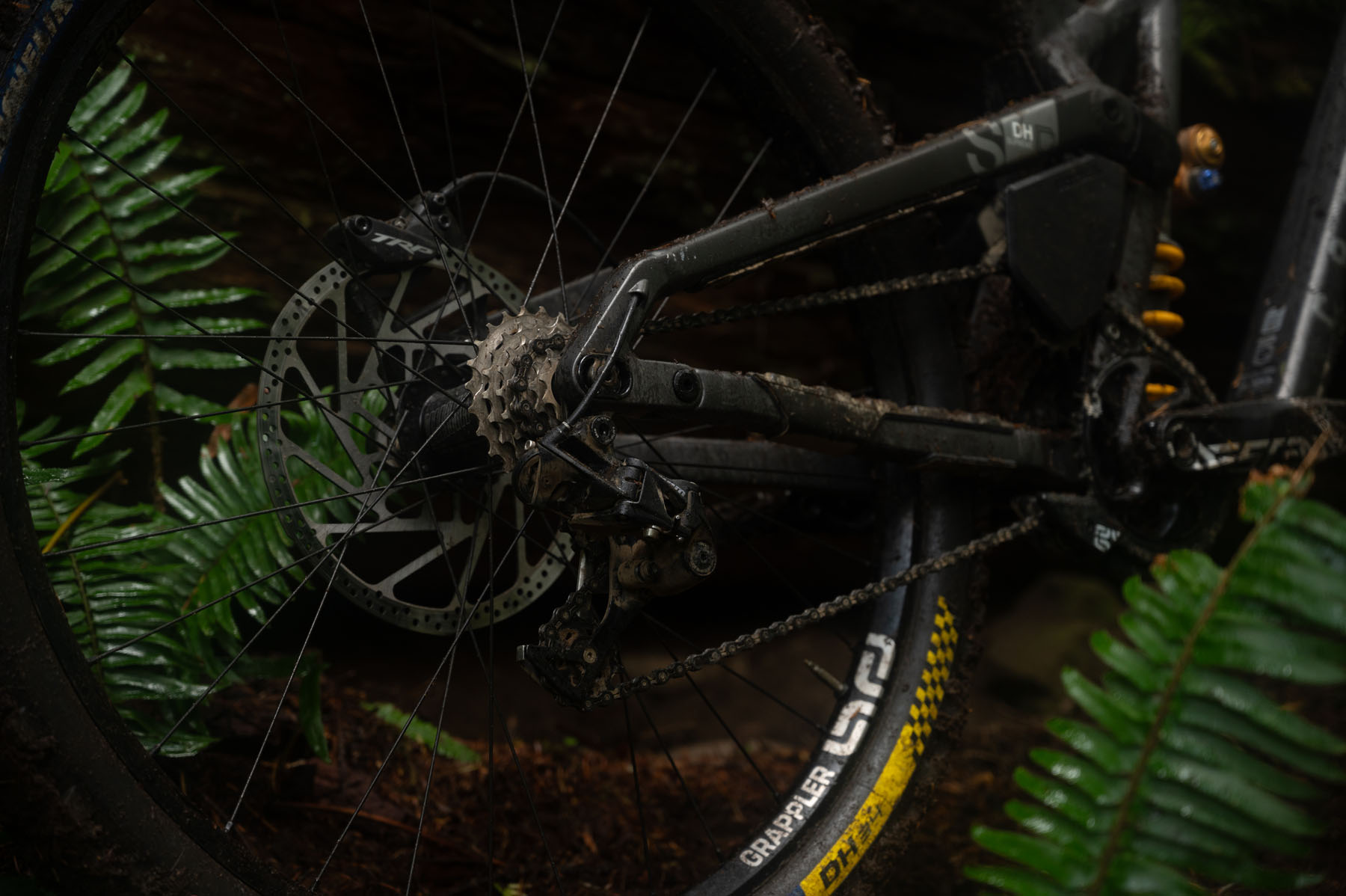
Zack: David’s damage to the e*thirteen Grappler wheels was already done by the time I received them. I will say that they didn’t feel laterally all that stiff, and given the Supreme’s excellent suspension and not overly stiff frame, I couldn’t help but wonder if upgrading to a stiffer aluminum or even carbon wheelset might add a bit more pep to the Supreme’s cornering manners.
David: I don’t disagree with Zack’s “not overly stiff” descriptor of the Supreme frame, but it’s definitely not some noodle, either — I’d call it a nice middle ground (with the stock seatstay brace), rather than any sort of outlier in one direction or the other. I probably would prefer a stiffer wheelset than the stock e*thirteen Grapplers too, but I want to be clear that I actually quite like the level of stiffness of the Supreme frame itself. I’m very sold on frame stiffness being a variable where there’s a nice middle ground to be found, rather than more is more being the way to go — even on a DH bike with a ton of suspension travel — and I think the Supreme lands in a nice place there.
Zack: While I’ve had some luck with Schwalbe Magic Marys in the past in particularly loose conditions, I find them to be terrifying on wet roots and rock, which was abundant after a Whistler rainstorm the night before my first day in the park. In addition to a number of very sketchy and unexpected near-crashes in the wet weather, I had a surprising number of rim pings despite running 26 PSI in the rear tire, which I later raised to 30 PSI to avoid an unwanted mechanical. The lack of grip and seemingly thin and flexible casing was a surprise for a downhill casing tire in their Ultra Soft compound, and I’d expect more versatility from a tire that seems to have such a lofty reputation.
David: On another note, the Supreme V5’s build quality on the frame seems quite good. There’s a lot going on here, between the six-bar suspension layout and a lot of complex tube shaping, especially in the front triangle, but everything is aligned nicely and is straightforward to work on, with good access to the pivot hardware and so on. I did need to add a little bit of mastic tape behind the molded rubber chainstay guard, which doesn’t extend quite far enough to get every bit of chain slap, but the Supreme was pleasantly quiet with that small tweak applied.
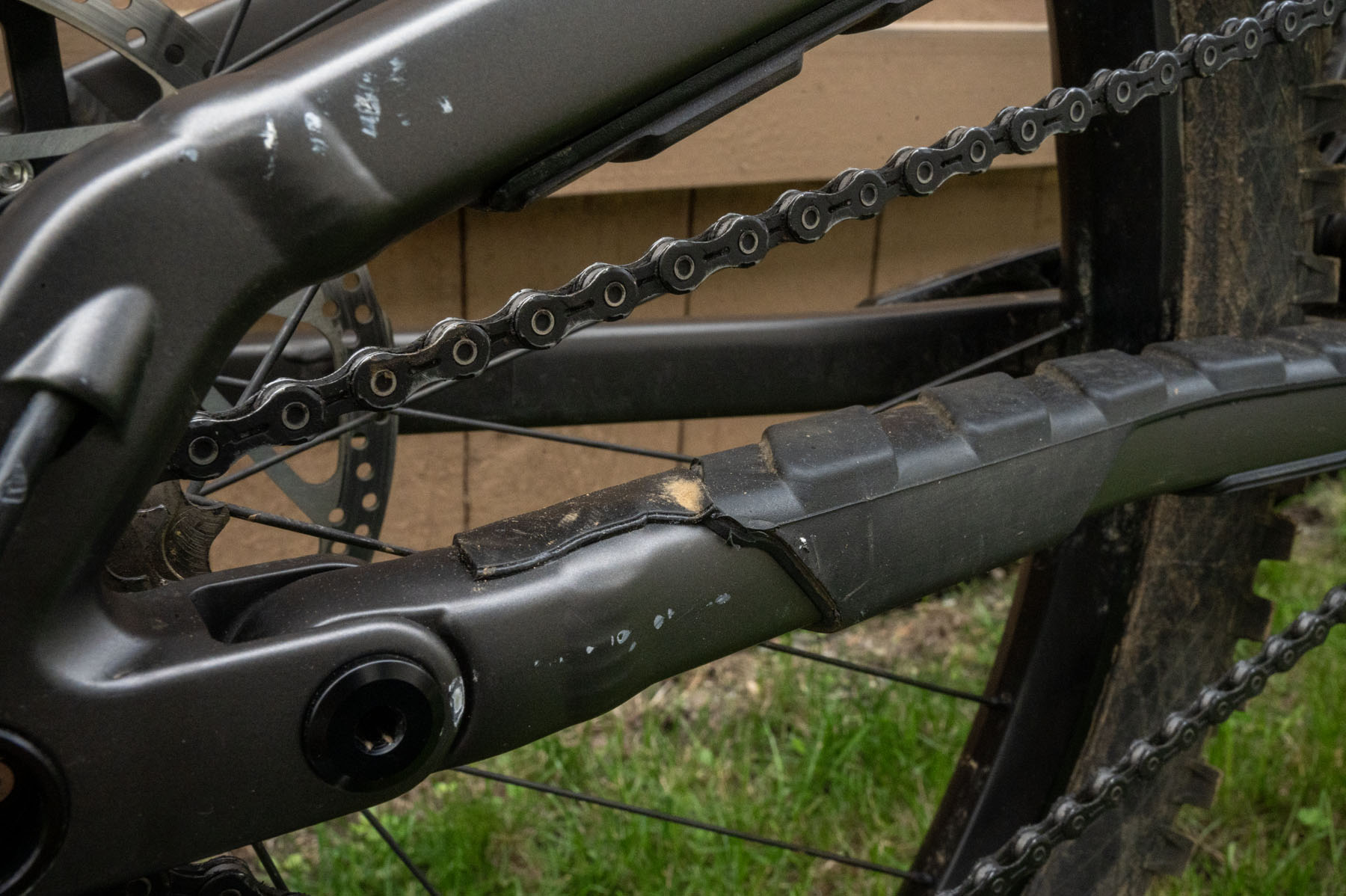
Comparisons
David: The Session and the Supreme are two of the most successful DH race bikes at the World Cup level in recent years, and both were clearly designed with that sort of riding in mind. Both are generally well-rounded, intuitive bikes that are easy to push hard and go fast on while being plenty manageable (but not the most exciting) on mellower trails and / or flowier jump lines.
That said, there are some differences. The Supreme (at least in the neutral chainstay setting on our size Large review bike) has a slight preference for being ridden from a more forward position to assertively weight the front end, whereas the Session is happier being ridden a little more centered and upright. The Session also feels livelier and not quite as planted in terms of its suspension performance, whereas the Supreme has the edge in terms of rear-wheel traction and small-bump sensitivity. Along with that, the Supreme feels more composed when carrying speed through really rough, fast sections of trail, but the Session is a little more nimble and sharp handling in tighter, more awkward spots.
Canyon Sender CFR
Zack: While both bikes are wildly successful downhill race machines, they offer a significantly different feel on the trail. Where the Supreme V5 needed some body positioning adjustments to get the most out of its cornering abilities, the Sender CFR rewards a more centered body position and feels more intuitive in tighter turns. The Sender also feels lighter and livelier, with a predictable yet very progressive feeling suspension that feels like it rides a bit higher and changes direction more easily than the Supreme V5. While this helps the Sender carry speed better in less technical terrain and while jumping, the Supreme V5 pulls ahead in ultra-rough terrain, where its suspension seems to sit a bit lower in the travel and transfer less feedback to the rider.
David: These two aren’t super similar. The Supreme is more stable at speed than the Jedi and more composed when going super fast in rougher sections, but more work to muscle around in tight spots and generally feels like a bigger, longer bike. Both have excellent suspension performance on really sharp square-edged hits, but the Jedi has a leg up on the Supreme, especially on flatter, lower-speed sections where it’s typically hard to maintain momentum and the bike feels prone to hanging up in holes. The Supreme, on the other hand, feels more natural when you really load up the suspension in a well-supported corner or when preloading it on the face of a jump, with less noticeable changes to the weight distribution between the two wheels and the required balance point on the bike — I think largely down to its overall longer wheelbase and what feels like a less dramatically rearward axle path. The Jedi feels a bit more plush, nimble, and forgiving if you’re not pushing it super hard, but the Supreme is more stable and confidence-inspiring when speeds really start to pick up.
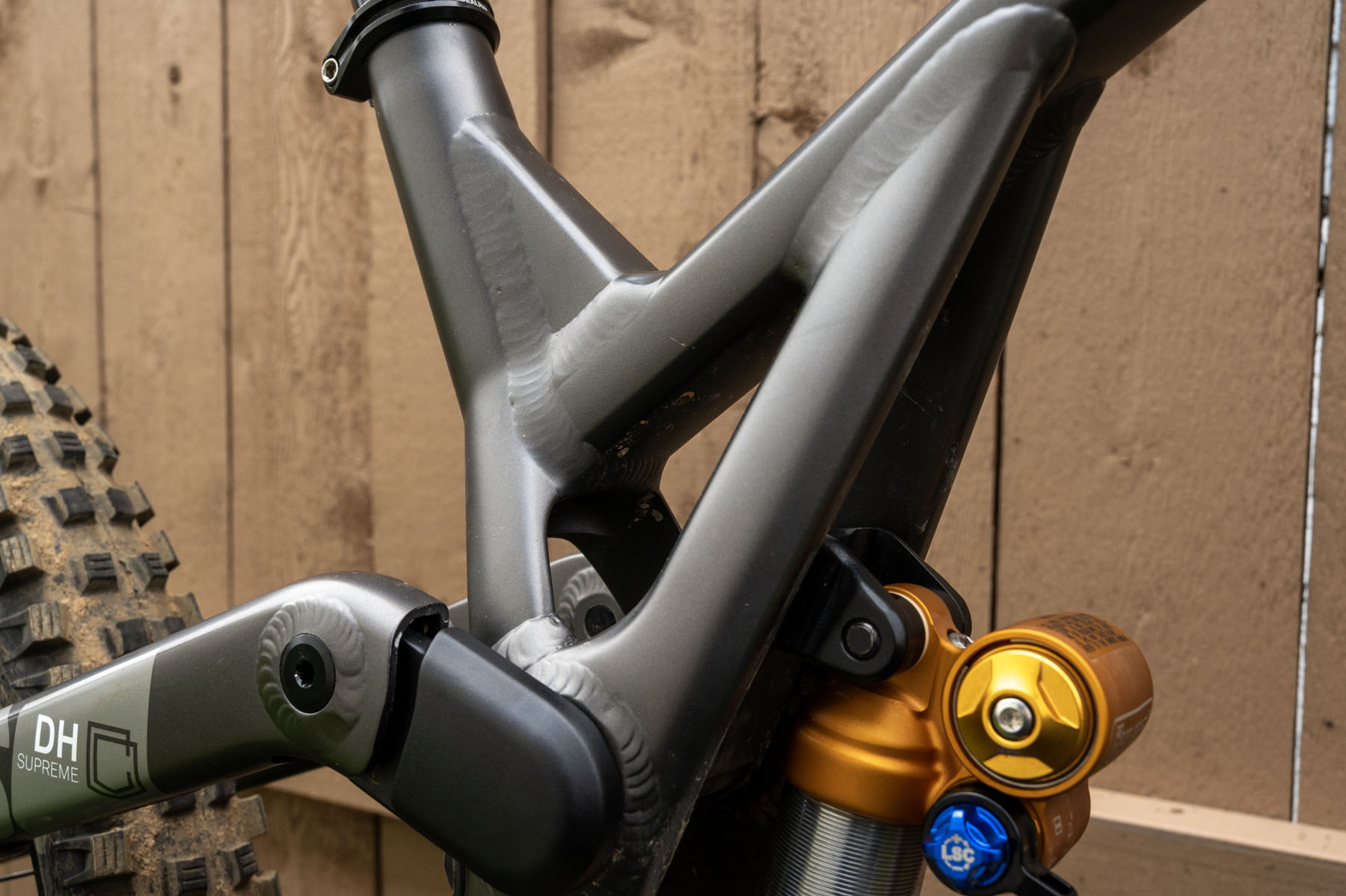
Who’s It For?
Zack: The Supreme V5 is a more versatile bike than its predecessor, but it’s definitely still a racing-oriented DH bike. Requiring a good dose of speed to feel at its best, the Supreme V5 caters well to folks who have some racing aspirations or just like going fast on rough trails that can take advantage of the Supreme’s composure at the limit. It is predictable while jumping but still tends to absorb lips more than more freeride-oriented bikes might, making it perhaps a less compelling choice for folks who prefer A-Line-esque flow trails. Despite its preference for speed and the firm feel of the Öhlins suspension on our test bike, I didn’t feel that the Supreme V5 necessarily required an advanced pilot — it could be a great investment for more intermediate-level riders who want a bike that they can grow with.
David: I’m in full agreement with Zack on this one. The Supreme V5 is a bike that’s going to work best for people who primarily want a DH bike to go fast on, whether that’s between the tape or just because going fast is really fun. But it does an impressive job of doing that while not being a total handful if you’re taking things easier, too, and it’s far from being a super demanding bike that you need to be a World-Cup-level rider to get along with. Its appeal is going to hinge far more on riding style and preferred types of trails than it does on skill level. If you want a bike to push hard and go fast — whatever that means for you — on steeper, rougher DH tracks in particular, there’s a lot to like here.
Bottom Line
Commencal’s latest iteration of the Supreme is a great DH race bike, or an everyday park bike for people who bring a DH-race-oriented approach to the hill. It also does an especially effective job of mitigating some of the quirks that can arise with high-pivot bikes in terms of braking performance and predictability. The Supreme V5 is not super engaging if you’re just cruising flow trails and jump lines, and there are more playful freeride-oriented bikes that are better suited for that specific duty. But the Supreme handles that sort of riding just fine and really comes into its own when you point it down something rougher / more technical and start to push it a bit.

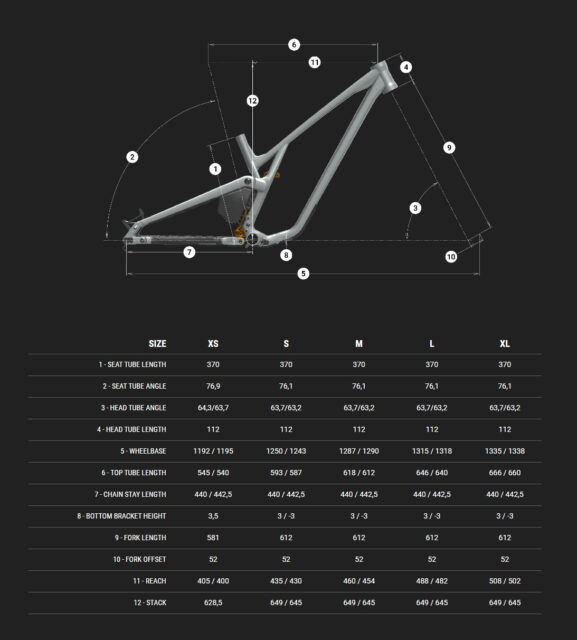
Indeed commencal had carbon full suspension and hardtail frames in their lineup around 2009 ~2012 and then stopped.
Does it break like the previous ones?
I heard from pit crew – no, it´s more durable
Guys, may I have a Q on you – you felt OK, because you are 184 on L frame …
I am 187cm, 91 inseam and wondering L or XL … any advice? It wil be very helpful, still searching for data before I send my order :) …
I ride DH courses and BP laps.
I’m about 180cm (5’11) and run a large on the previous model (supreme v4 29 2021) and it fits me perfectly, but looking for an upgrade. I would use it primarily as a race bike (going fast and through rough stuff) but just wondering whether a large would be alright or a medium.
Any chance that there could be some clarification about why this geometry chart and the one posted on the Commencal website are so different? Commencal website suggests for example that there are size specific chainstays.
Hmm, the chart we have published is the one that Commencal provided when the bike launched but the one they have on their site now is indeed a bit different. I’ll reach out for clarification.